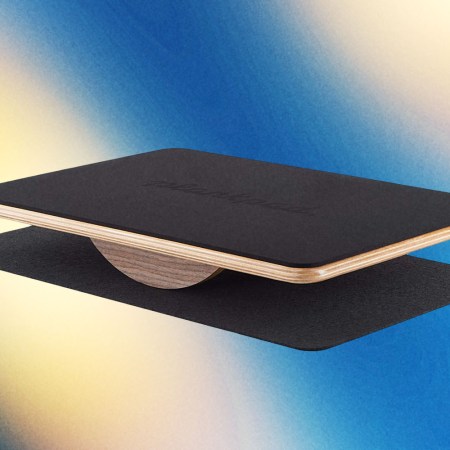You’d be wise to take Mark Wahlberg’s health and fitness whims with a massive great of salt. The man endorses lots of products on social media, owns a chain of gyms and once adhered to the most batshit daily routine of all time.
There’s one habit of his though, which we covered earlier this year, that’s a legitimate life-hack to more effective strength-training sessions: blood-flow resistance training. It’s recently found popularity amongst a pair of Olympians (Galen Rupp, one of the greatest American long-distance runners ever, and three-time alpine skiing World Champion Mikaela Shiffrin), who both employ the method in supplemental and recovery training.
How does it work? It’s basically a performance tourniquet. You inflate a band to a certain pressure then situate it at a strategic spot on your limbs. For the upper body, that’s between the biceps and the deltoids. The idea is to partially limit blood flow (venous flow is blocked, arterial flow is able to pass through) so that blood cells have no choice but to collect around the muscles you’re trying to target. This puts the entire area under significant stress, which leads to an increase in blood lactate concentration, which leads to swelling.
It aches like hell — the muscles desperately need oxygen and none is on the way — but that’s why it works so well. When Rupp or Shiffrin or Wahlberg put on a pair of BFR bands, they’re not trying to have their hardest workout of the week; they’re actually taking it relatively easy, with light weight on the dumbbells and light resistance on the exercise bike. They won’t work out much longer than 20 minutes. The point is to let the bands do the work. It’s possible, in this state, to get a fantastic pump just from lifting dumbbells as light as 20-30% the weight of your “one-rep max.”
The first time Shiffrin tried BFR bands, according to Outside, she ended the workout thinking: “Oh my gosh, my arms are sore, like I just did 200 push-ups or something.” She’d only worked out for 15 minutes. They’re equally effective for her lower half, able to simulate the vice grip of a day spent on challenging slopes without her actually having to strap into skis — which comes especially in handy if she’s looking to stay healthy or low-impact before an upcoming event. Like, say, Beijing 2022.
It might sound strange: Why are we, let alone Olympians, just getting acquainted with time-saving, body-preserving performance technology? Well, the method was invented in Japan in 1966, by Dr. Yoshiaki Sato, and didn’t make it to the States until the early 2000s, at which point it was still prioritized for injury rehabilitation, particularly for athletes coming out of surgery, who needed to slowly and safely build up an arm or leg.
BFR finally made the leap to performance research in the decade thanks to the efforts of Dr. Jim Stray-Gundersen. (It’s a typical origin story: he heard about the technique on a business trip to Tokyo, then came home and told anyone who would listen.) Dr. Stray-Gundersen’s brand, B Strong, is now the easiest way for those of us who don’t train in Colorado to reap the rewards of BFR.
One thing to keep in mind before you tighten the bands around your muscles: resist the urge to go overboard. If you keep lifting, or reach for the 25-pounders, you’re going to defeat the purpose of the workout, and possibly cause a blood clot. Keep the pressure within the recommended limit and the workout light and quick. Circuits are your best friend here. We were fed a bunch of fitness mistruths from celebrities this year; it’s nice to know Marky Mark had our best interests at heart — this time around, at least.
Thanks for reading InsideHook. Sign up for our daily newsletter and be in the know.


















